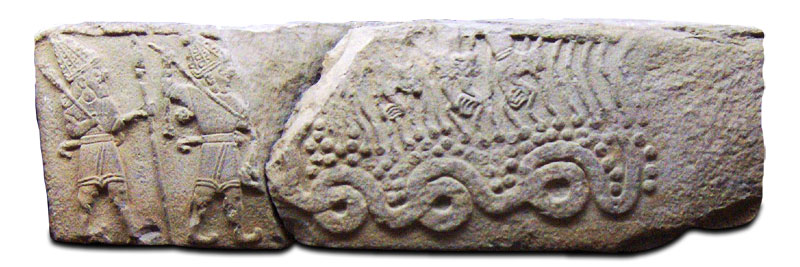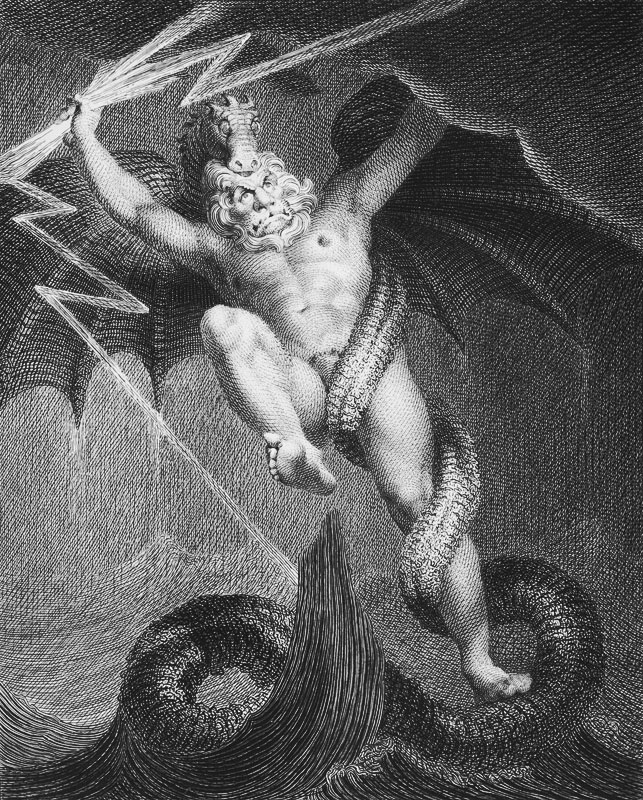Dragon Mythology: Illuyanka
Continuing our series on dragon mythology, we are going to look at a dragon found in Hittite folklore, the Illuyanka.
Illuyanka
In Hittite mythology, Illuyanka was a serpentine dragon slain by Teshub (Tarhun), the Hittite god of sky and storm. The myth is found in Catalogue des Textes Hittites 321, which gives two versions, one immediately following the other.
First version
In the first version, the two gods fight and the dragon Illuyanka wins. After his defeat, Teshub goes to the Hattian goddess Inaras for advice. With the help of Hupasiyas, a mortal man whom she wants to bed, she creates a trap for the dragon using large quantities of food and drink to get Illuyanka drunk. Once inebriated, the dragon is bound with ropes by Hupasiyas. The Sky God Teshub then appears and kills the dragon.
Second version
In the second version, once again, Teshub loses, and the dragon Illuyanka takes Teshub’s eyes and heart. To avenge himself, Teshub marries the goddess Hebat and they have a son whom they name Sarruma, who grows up and marries the daughter of the dragon. The Sky God Teshub commands his son to ask Illuyanka for his eyes and heart back as a wedding gift, to which the dragon agrees. With his eyes and heart restored, Teshub goes to fight the dragon once more. As Teshub is about to kill the dragon, Sarruma realizes that he had been used. He demands that his father take his life along with Illuyanka’s, and so Teshub kills them both with intense rain and lightning.
This version of the story is illustrated on a relief found at Malatya (dating from 1050-850 BC) and is on display in the Museum of Anatolian Civilizations in Ankara, Turkey (see below). In the image you can see Teshub, the sky god, killing the dragon Illuyanka. Behind him stands his son Sarruma.
 PHOTO: Depiction of the myth of the Sky God killing the dragon Illuyankas ; Neo-Hittites; 850-800 BC.
PHOTO: Depiction of the myth of the Sky God killing the dragon Illuyankas ; Neo-Hittites; 850-800 BC.
Limestone orthostat at the Lions Gate at Malitiya (Arslantepe), now at the Museum of Anatolian Civilizations, Ankara, Turkey.
Author: Georges Jansoone. Creative Commons Attribution-Share Alike 2.5 Generic license.
Hittites
For those that didn’t know, the Hittites occupied the ancient region of Anatolia (as it was then Asia Minor, now modern-day Turkey) around 1600 BC, and expanded their territories into an empire that reached its height during the mid-14th century BC. At this point it encompassed an area that included most of Anatolia as well as parts of the northern Levant and Upper Mesopotamia. It was an empire of such size that it rivaled, and threatened, the established nation of Egypt.
Most of the history of the Hittite civilization is found in cuneiform texts discovered in the area their kingdom covered. Other information has been found in diplomatic and commercial correspondence from various archives in Assyria, Babylonia, Egypt and the Middle East.
During the 1920s, interest in the Hittites increased with the founding of the modern Republic of Turkey. The field of Hittitology influenced the naming of Turkish institutions, such as the state-owned Etibank (“Hittite bank”). In 1921, the Museum of Anatolian Civilizations in Ankara opened, 200 kilometers west of the Hittite capital, housing the most comprehensive exhibition of Hittite art and artifacts in the world.
Similar Myths
In 1930, W. Porzig first made the comparison of the battle between Teshub and Illuyanka with the sky-god Zeus’ battle against the serpent-like Typhon (see image below). This example of an ultimate war of a God against a serpent can also be seen in the myths surrounding Thor and Jörmungand (Scandinavian mythology), Indra and Vritra (Indian mythology), and as mentioned already, Zeus and Typhon (Greek mythology).

Dragon Lore
Thank you for reading this short article about Illuyanka, a dragon found in Hittite mythology. This is just one in a series of dragon lore articles on Everything Dragon Shop. We hope to add more as the website grows.


